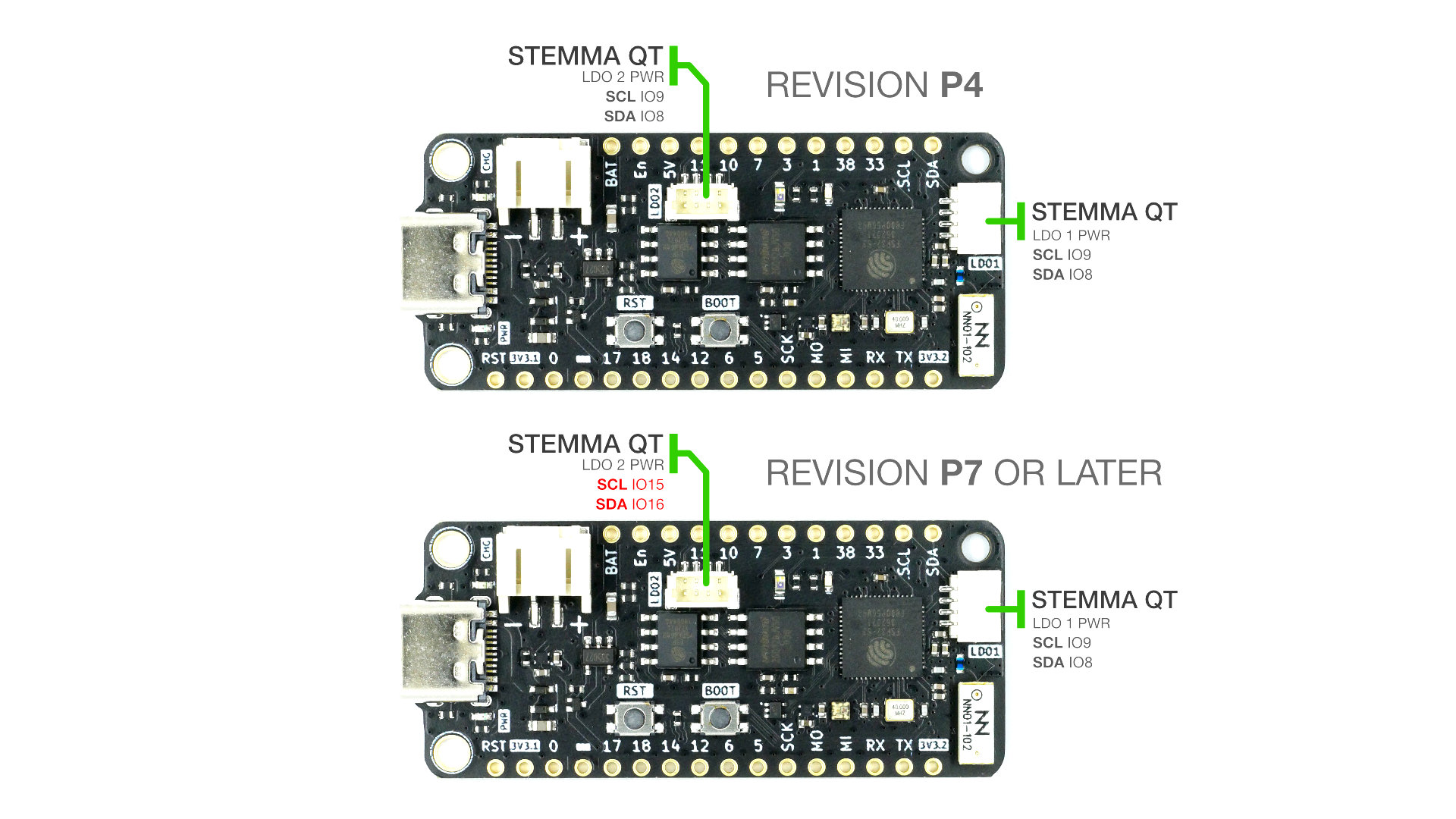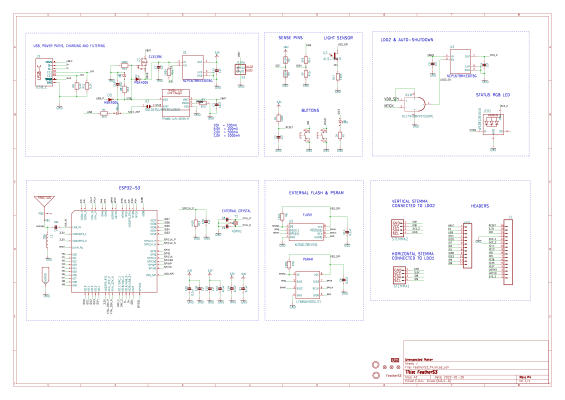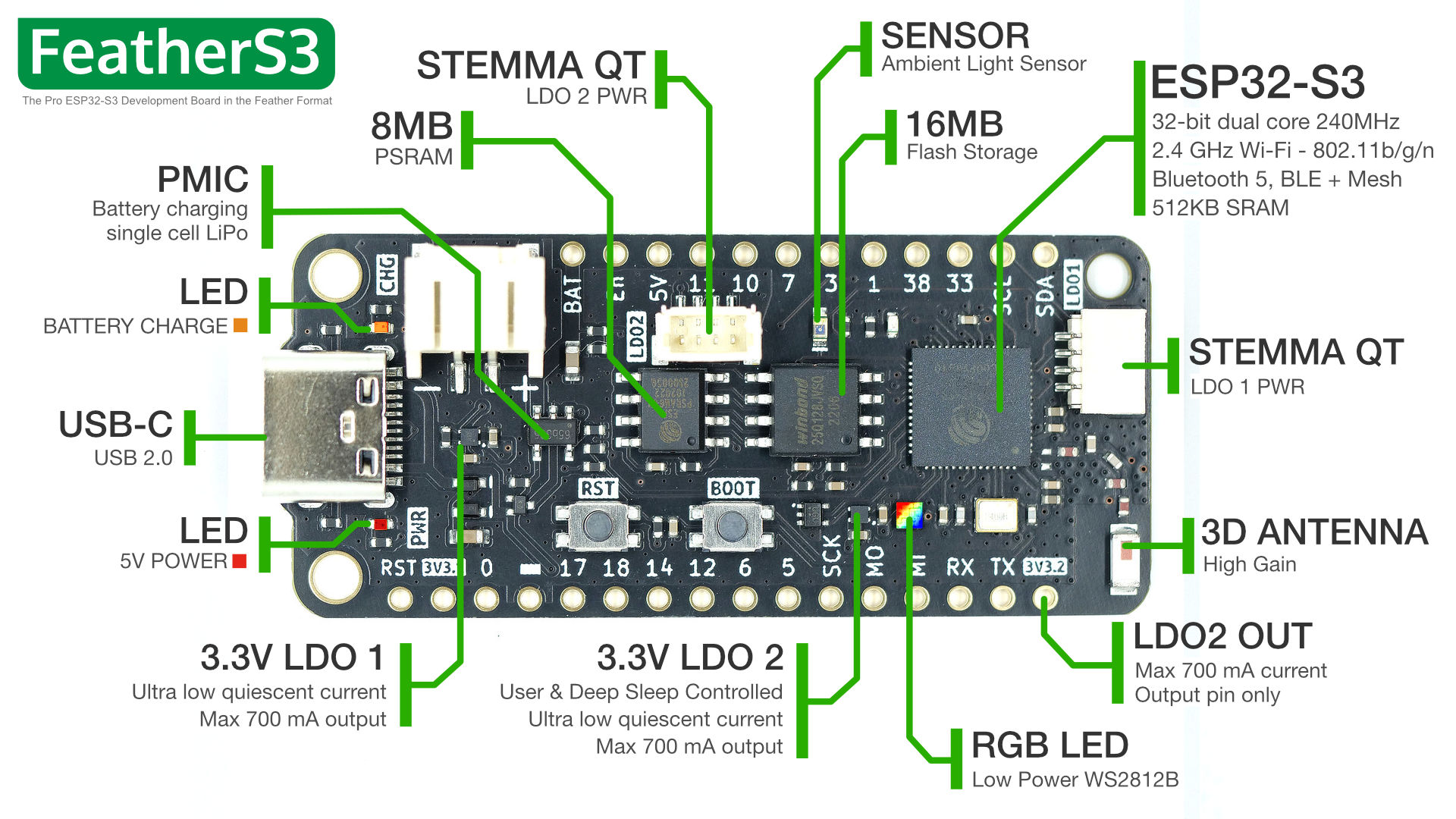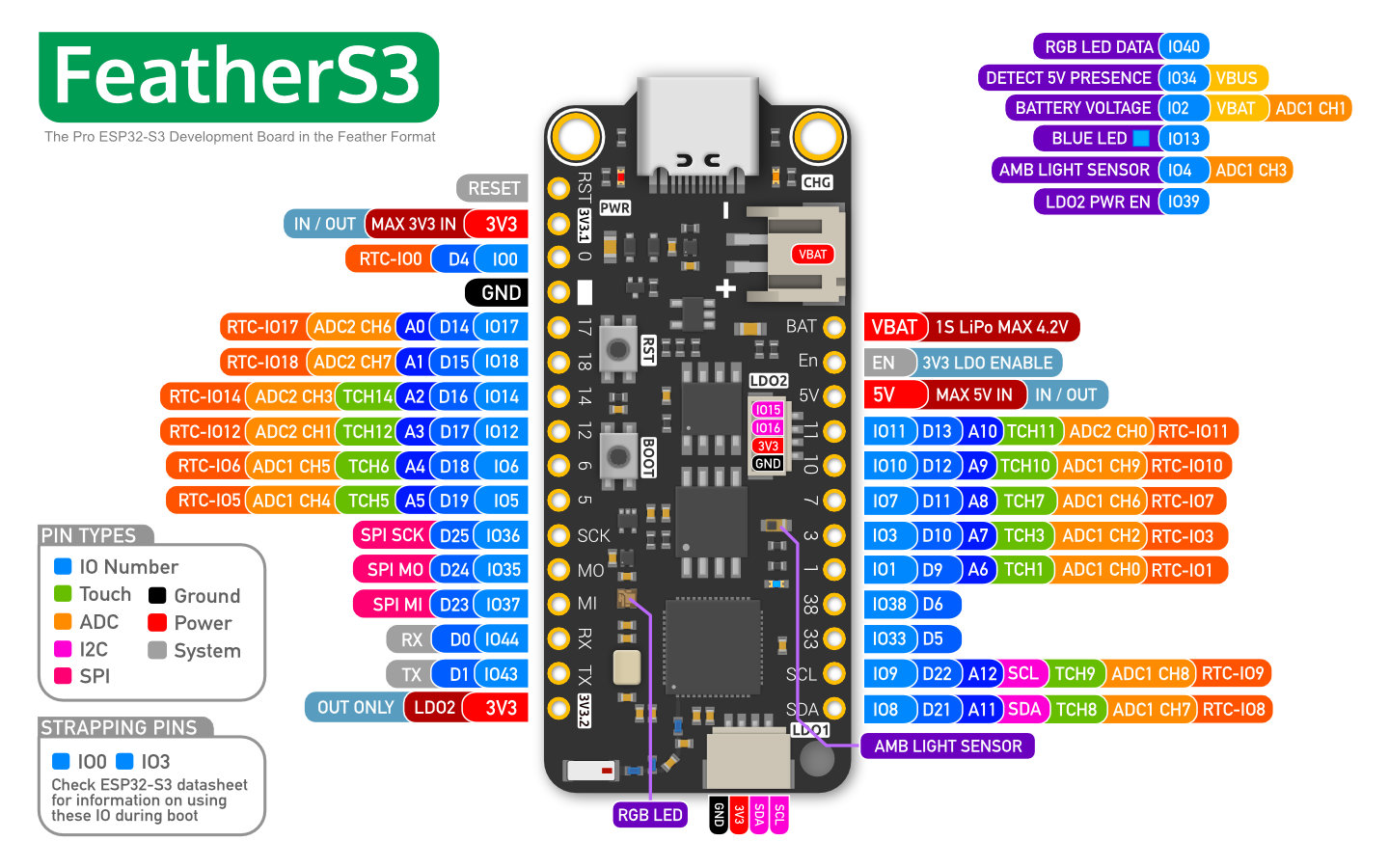FeatherS3 is the latest in our super popular ESP32 based Feather boards.
The FeatherS3 offers a powerhouse of features in the super popular Feather format offer a huge ecosystem of add-on boards, modules and FeatherWings!
The FeatherS3 includes the following features:
- Dual 32bit Xtensa LX7 cores @ up to 240Mhz
- RISC-V Ultra Low Power Co-processor
- 2.4GHz Wifi - 802.11b/g/n
- Bluetooth 5, BLE + Mesh
- 16MB QSPI Flash
- 8MB of extra QSPI PSRAM
- 2x 700mA 3.3V LDO Regulators
- LDO2 is user controlled & auto-shuts down in deep-sleep
- ULTRA LOW Deep Sleep Current
- USB-C Connector with back-feed protection
- Native USB + USB Serial JTAG
- LiPo Battery Charging
- Low power RGB LED
- VBAT and 5V Sense Pins
- 3D High Gain Antenna or u.FL connector<
- 2x STEMMA QT connectors, 1 on LDO1 and 1 on LDO2
- 21x GPIO including castellated headers
- Feather Format compatibility
2x 3.3V Regulators? Really?
Yup! The first one is for the general operation of the board and the ESP32-S3, PSRAM and Flash.
The second LDO is for you to use to connect external 3V3 modules, sensors and peripherals, and it has programmable EN control tied to IO39 + it’s connected to the deep sleep capabilities of the ESP32-S3, so if the ESP32-S3 goes into deep sleep, the 2nd LDO is automatically shut down for you! LDO2 also powers the onboard RGB LED.
Both regulators are ultra low noise and have ultra low quiescent current, and both support a maximum of 700mA output.
2x STEMMA QT connectors?
Yes! One of the biggest feature requests I had about the FeatherS2 was that the single STEMMA QT connector was connected to LDO1 instead of LDO2. That was by design as there are plenty of use cases where you want your external sensor or module to stay powered when your ESP32 goes into deep sleep.
To solve this on the FeatherS3 I squeezed in a second STEMMA QT connector!!! Now there are 2!
The second STEMMA QT connector (The vertical one) is connected to the second LDO for power, so any I2C modules/devices you have connected to the that STEMMA QT connector will automatically power down when the ESP32-S3 goes into deep sleep or if you disable the second LDO via IO39.
Are the STEMMA QT connectors on the same I2C BUS or seperate?
The original FeatherS3 (version P4, shown on the back of the board) had both STEMMA/QT connectors sharing the same IO pins, therefor sharing the same BUS. This was to be changed in the future where I would separate out the 2 connectors and use different IO for the vertical one.
In the current FeatherS3 (version P7 and onwards), the vertical STEMMA/QT connector now uses IO15 and IO16 for the I2C pins, while the horizontal STEMMA/QT connector still uses IO8 and IO9. This means you now have 2 separate I2C BUSES on the FeatherS3 now.

In CircuitPython, you can access each I2C bus directly using the provided board definitions without requiring the SCL and SDA IO to be specified:
i2c_bus = board.I2C() i2c_bus2 = board.I2C2()
Feather Comparison Matrix
Development Platforms
Please check out the new PLATFORMS area of the Getting Started guide to find out all about developing for your new board in a range of different languages!
Downloads
FeatherS3 Schematic

GitHub
The Unexpected Maker ESP32-S3 GitHub Repo includes the following items:
- 3D STEP file for the FeatherS3
- KiCAD 6 symbol file for the FeatherS3 that you can use when integrating one of them into one of your PCB designs
- KiCAD 6 footprint file for the FeatherS3
- PDF Schematic for the FeatherS3
- Hi-res pinout reference card for the FeatherS3
- Helper libraries for Arduino, CircuitPython and MicroPython
ESP32-S3 Datasheet
If you need more detailed information about the ESP32-S3, including full IO capabilities and other functionality, please refer to the ESP32-S3 Datasheet from Espressif.

